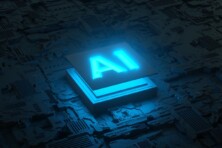In an age where digital threats are growing increasingly sophisticated, utilizing Artificial Intelligence (AI) in cybersecurity emerges as a vital safeguard in the arsenal of digital protection. At Upskillist, we comprehend the immediacy and necessity of this integration, particularly for a diverse audience that encompasses B2C and B2B professionals, content creators, marketers, and developers enthusiastic about AI integration.

Moreover, it also caters to inquisitive learners eager to grasp AI’s intricacies. This exploration delves into the advantages of artificial intelligence in fortifying cybersecurity defenses and addresses the emerging concept of AI-enhanced cyber threats.
Understanding AI’s Role in Cybersecurity
Integrating AI into cybersecurity is not a mere enhancement; it signifies a pivotal paradigm shift in the conceptualization and deployment of cyber defenses. The advantages offered by artificial intelligence in this realm are multifaceted and extensive. By harnessing the power of AI, cybersecurity systems can attain heightened adaptability, intelligence, and efficiency, significantly enhancing their ability to prevent and respond to cyber threats.
- Anticipating Potential Threats: The prowess of AI systems lies in their ability to identify and neutralize threats before they materialize. This predictive capability is considered one of the critical advantages of artificial intelligence in cybersecurity, allowing organizations to enhance their defenses in advance.
- Responsive Threat Intelligence: By harnessing its exceptional data processing capabilities, AI can swiftly identify potential threats. This rapid response capability, a key advantage of machine learning in cybersecurity, effectively narrows the time frame for attackers to carry out malicious activities.
- Non-Stop Monitoring: By leveraging artificial intelligence, cybersecurity solutions now offer round-the-clock monitoring, a feature that traditional security systems lack. This cutting-edge approach significantly enhances the ability to detect and prevent breaches, reducing the likelihood of undetected attacks.
- Natural Adaptation: AI systems acquire knowledge and evolve over time, consistently refreshing their understanding of emerging threats. This ability to adapt is a crucial advantage in an ever-changing digital realm.
The Ever Evolving Cyber Threats
The advent of AI in cybersecurity has led to the emergence of a fresh breed of cyber threats, namely AI-enhanced cyber attacks. These sophisticated threats employ AI methodologies to execute automated and intelligent attacks, posing significant challenges to conventional cybersecurity methodologies. Understanding these threats is crucial for developing AI-driven cybersecurity strategies encompassing proactive and resilient measures.
AI holds immense potential in bolstering cybersecurity and encompasses multiple facets. AI is reshaping the landscape of digital security by utilizing machine learning, advanced threat modeling, and predictive analytics. Prominent machine learning companies are at the forefront of this transformative progress, devising solutions capable of real-time prediction, adaptation, and response to cyber threats.
Finding the Right Balance
While AI’s application in cybersecurity offers significant benefits, it is essential to think about and strategize potential risks. The potential misuse of AI in cyber attacks necessitates a prudent and measured approach when integrating artificial intelligence into cybersecurity solutions.
How AI Continues to Pioneer Cybersecurity
With the continuous evolution of digital landscapes, the methods employed to safeguard them also transform. Artificial Intelligence (AI) plays a diverse role in cybersecurity, surpassing traditional security measures and offering dynamic and intelligent solutions.
- Security Measures on Automatic: Automating security protocols is a crucial advantage machine learning provides in cybersecurity. Through AI algorithms, network traffic can be continuously monitored, abnormal patterns can be identified, and protective measures can be automatically initiated. This streamlined process significantly reduces the time required to respond to potential threats, bolstering the effectiveness of security measures.
- Behavioral Analytics: The aptitude of AI systems lies in their ability to learn and analyze user behavior patterns. This remarkable capability enables the identification of anomalies that may point to security loopholes, such as unusual login times or locations at online banking institutions or online casinos, for example. As a result, AI becomes an invaluable asset in identifying insider threats or compromised accounts.
- AI Responding to Incidents: The utilization of AI empowers the ability to proactively scour a network for undetected cyber threats (referred to as threat hunting) and enhances the productivity of incident response teams by rapidly analyzing past incident data to forecast and preempt future attacks.
- Managing Vulnerable Spots: By utilizing AI’s predictive analytics, cybersecurity teams can effectively evaluate and prioritize vulnerabilities in a system, ensuring that the most critical issues are promptly addressed and potential exploits are prevented.
Cybersecurity is confronted with a significant hurdle posed by the intricacy of AI-enhanced cyber threats. To devise more advanced methods of attack, cybercriminals are increasingly harnessing the power of AI. This includes the creation of polymorphic malware, which possesses the ability to modify its code to evade detection. Furthermore, AI is being employed to orchestrate highly sophisticated phishing attacks.
Machine Learning for Cybersecurity
Machine learning programs are pivotal in contemporary cybersecurity solutions, assuming a central role. They offer a range of benefits, including:
- Processing Data on the fly: By leveraging ML algorithms, it becomes possible to swiftly process and analyze extensive amounts of data in real time, resulting in the expedited identification of potential hazards.
- Recognizing Patterns: The capability of ML to identify patterns and anomalies in data is exceptional, making it a vital tool for detecting advanced persistent threats and zero-day exploits.
- Predicting Risks: Through historical data analysis, machine learning can forecast potential vulnerabilities and threats, thereby facilitating proactive measures.
AI and Associated Risks
Achieving a harmonious balance between the advantages of AI in cybersecurity and the risks it entails is of utmost importance. Paramount considerations involve guaranteeing the ethical utilization of AI, safeguarding against biases that may emerge, and shielding AI systems from manipulation by malicious actors.
Other AI Security Roles for Cybersecurity
AI significantly enhances the analysis of security logs by automating the processing and examination of diverse log data. This automation dramatically contributes to real-time threat detection, anomaly identification, and pattern recognition. Moreover, AI reduces false positives, facilitates behavioral profiling, and supports proactive threat hunting. Furthermore, AI enables the scalable and efficient analysis of large data volumes, enabling early warnings, automating incident response, and conducting advanced analytics.
However, it is essential to acknowledge that human expertise remains crucial for validating alerts, investigating incidents, and making critical decisions. Additionally, addressing ethical considerations and biases in AI models during implementation is imperative to ensure the system’s integrity and fairness.
Conclusion
The realm of AI in cybersecurity holds immense potential. By constantly innovating and expanding their educational offerings, cybersecurity companies continue to pave the way for advancements in autonomous threat detection systems, AI in IoT security, and the integration of blockchain technology to secure AI systems.









